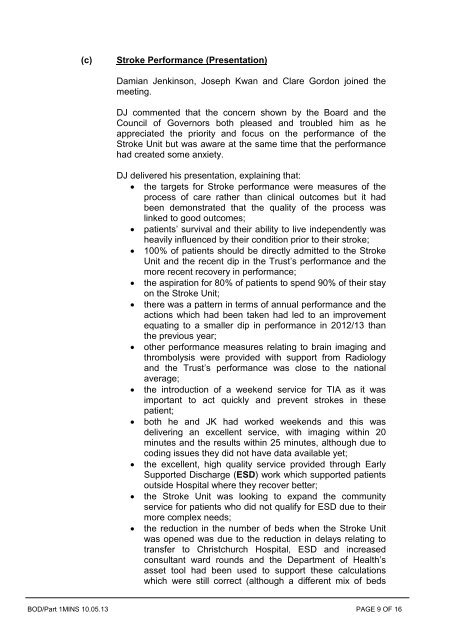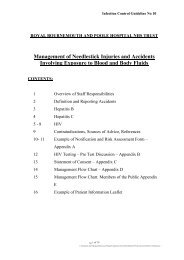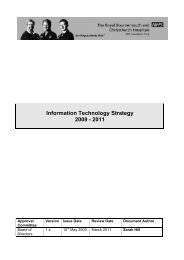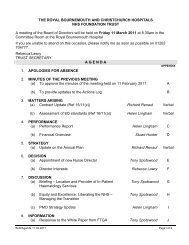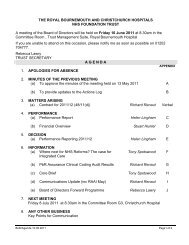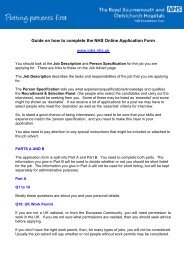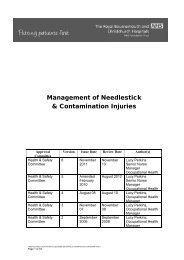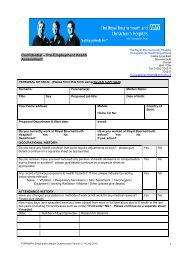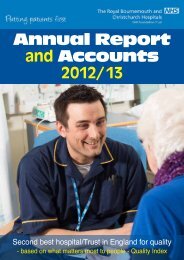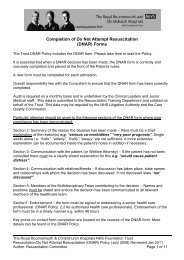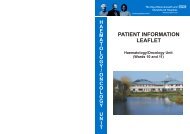A G E N D A 1. APOLOGIES FOR ABSENCE Ian Metcalfe 2 ...
A G E N D A 1. APOLOGIES FOR ABSENCE Ian Metcalfe 2 ...
A G E N D A 1. APOLOGIES FOR ABSENCE Ian Metcalfe 2 ...
You also want an ePaper? Increase the reach of your titles
YUMPU automatically turns print PDFs into web optimized ePapers that Google loves.
(c)Stroke Performance (Presentation)Damian Jenkinson, Joseph Kwan and Clare Gordon joined themeeting.DJ commented that the concern shown by the Board and theCouncil of Governors both pleased and troubled him as heappreciated the priority and focus on the performance of theStroke Unit but was aware at the same time that the performancehad created some anxiety.DJ delivered his presentation, explaining that:• the targets for Stroke performance were measures of theprocess of care rather than clinical outcomes but it hadbeen demonstrated that the quality of the process waslinked to good outcomes;• patients’ survival and their ability to live independently washeavily influenced by their condition prior to their stroke;• 100% of patients should be directly admitted to the StrokeUnit and the recent dip in the Trust’s performance and themore recent recovery in performance;• the aspiration for 80% of patients to spend 90% of their stayon the Stroke Unit;• there was a pattern in terms of annual performance and theactions which had been taken had led to an improvementequating to a smaller dip in performance in 2012/13 thanthe previous year;• other performance measures relating to brain imaging andthrombolysis were provided with support from Radiologyand the Trust’s performance was close to the nationalaverage;• the introduction of a weekend service for TIA as it wasimportant to act quickly and prevent strokes in thesepatient;• both he and JK had worked weekends and this wasdelivering an excellent service, with imaging within 20minutes and the results within 25 minutes, although due tocoding issues they did not have data available yet;• the excellent, high quality service provided through EarlySupported Discharge (ESD) work which supported patientsoutside Hospital where they recover better;• the Stroke Unit was looking to expand the communityservice for patients who did not qualify for ESD due to theirmore complex needs;• the reduction in the number of beds when the Stroke Unitwas opened was due to the reduction in delays relating totransfer to Christchurch Hospital, ESD and increasedconsultant ward rounds and the Department of Health’sasset tool had been used to support these calculationswhich were still correct (although a different mix of bedsBOD/Part 1MINS 10.05.13 PAGE 9 OF 16


